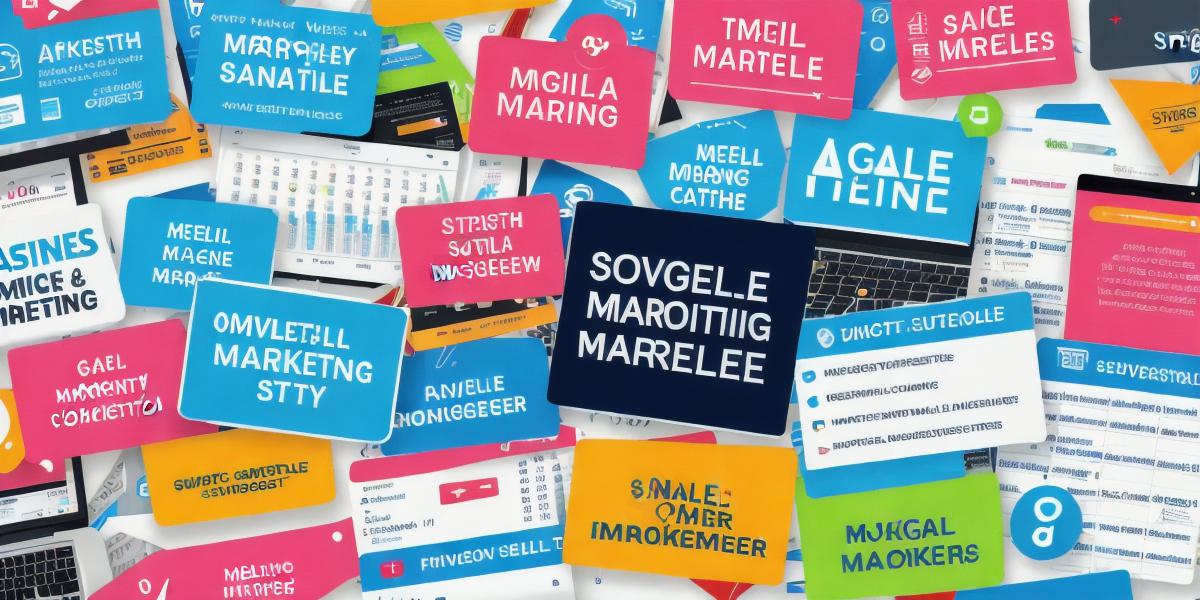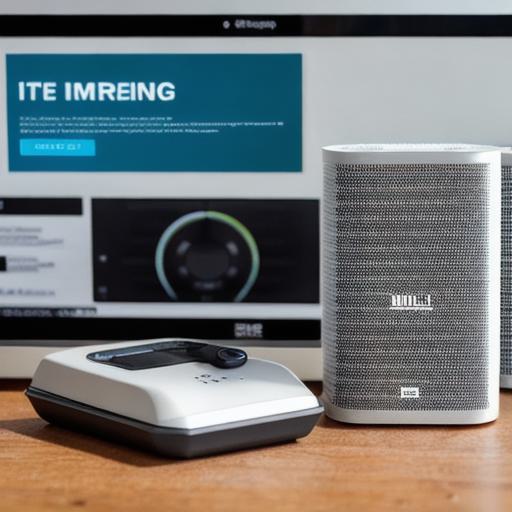10 Effective Zero-Cost Marketing Tools for Small Businesses: Boosting Your Brand without Breaking the Bank
Small businesses are often strapped for cash, and marketing can be one of the first expenses to get cut. However, having a strong online presence is crucial for attracting customers and growing your brand. Fortunately, there are many effective zero-cost marketing tools available that can help small businesses promote their products or services without breaking the bank. In this article, we’ll explore 10 such tools, along with case studies and expert opinions to help you make the most of your marketing budget.
1. Social Media Marketing
Social media platforms like Facebook, Instagram, Twitter, and LinkedIn are powerful tools for reaching potential customers and building your brand. With billions of active users, these platforms offer a vast audience for small businesses to tap into. Here’s how you can use social media marketing effectively:
- Create a business profile on each platform and fill out all the necessary information.
- Post engaging content regularly, including images, videos, and updates about your products or services.
- Use relevant hashtags and keywords to make it easier for people to find your posts.
- Engage with your followers by responding to comments and messages promptly.
- Run targeted ads to reach a specific audience based on demographics, interests, and behavior.
For example, a small business that sells handmade soaps can create a profile on Instagram and share pictures of their products. They can use hashtags like naturalbeauty and smallbusiness to attract potential customers who are interested in these topics. Additionally, they can run targeted ads to reach people who live in their local area or have shown an interest in similar products.
2. Email Marketing
Email marketing is another effective way to communicate with your customers and keep them engaged with your brand. Here’s how you can use email marketing to your advantage:
- Build a list of subscribers by offering a discount or freebie in exchange for their email address.
- Segment your list based on demographics, behavior, and interests to send targeted messages that resonate with each group.

- Use personalization techniques like name tags and customized subject lines to make your emails stand out.
- Include relevant content like product updates, promotions, and exclusive offers in your emails to keep subscribers engaged.
For example, a small business that sells organic skincare products can build an email list by offering a free sample of their best-selling product in exchange for a customer’s email address. They can then segment their list based on skin type and send targeted messages with personalized recommendations for each group. Additionally, they can include exclusive offers like discounts and promotions to keep subscribers engaged and coming back for more.
3. Content Marketing
Content marketing is the process of creating and sharing valuable content to attract and engage a clearly defined audience. Here’s how you can use content marketing to build your brand:
- Identify your target audience and their pain points, interests, and behaviors.
- Create a content plan that includes blog posts, videos, infographics, and other types of content that address your audience’s needs and interests.
- Optimize your content for search engines by using relevant keywords, meta descriptions, and tags.
- Promote your content on social media, email, and other channels to reach a wider audience.
- Measure the success of your content by tracking metrics like traffic, engagement, and conversions.
For example, a small business that sells eco-friendly cleaning products can create a blog post about natural ways to clean common household items without using harmful chemicals. They can optimize their post for search engines by including relevant keywords and meta descriptions. Additionally, they can promote their post on social media and email to reach a wider audience. Finally, they can measure the success of their content by tracking metrics like traffic and engagement.
4. Blogging
Blogging is a type of content marketing that involves writing and publishing articles or posts on a regular basis. Here’s how you can use blogging to build your brand:
- Choose a niche or topic that aligns with your business and target audience.
- Create a content plan that includes regular blog posts, guest posts, and other types of content.
- Optimize your blog for search engines by using relevant keywords, meta descriptions, and tags.
- Promote your blog on social media, email, and other channels to reach a wider audience.
- Measure the success of your blog by tracking metrics like traffic, engagement, and conversions.
For example, a small business that sells plant-based snacks can create a blog about healthy eating habits and recipes using natural ingredients. They can optimize their blog for search engines by including relevant keywords and meta descriptions. Additionally, they can promote their blog on social media and email to reach a wider audience. Finally, they can measure the success of their blog by tracking metrics like traffic and engagement.
5. Guest Posting
Guest posting is a type of content marketing where you write and publish articles or posts on other people’s websites or blogs. Here’s how you can use guest posting to build your brand:
- Choose relevant websites or blogs that align with your niche and target audience.

- Pitch your ideas for blog posts or articles to the website or blog owner, highlighting your expertise and why their audience would be interested in your content.
- Write a high-quality blog post or article that provides value to the reader and includes relevant keywords, meta descriptions, and tags.
- Include a bio at the end of your blog post or article that links back to your website or business.
- Measure the success of your guest posting by tracking metrics like traffic, engagement, and conversions.
For example, a small business that sells eco-friendly clothing can pitch their ideas for blog posts or articles to fashion blogs that focus on sustainable fashion. They can write a high-quality blog post or article that provides value to the reader and includes relevant keywords, meta descriptions, and tags. Additionally, they can include a bio at the end of their blog post or article that links back to their website or business. Finally, they can measure the success of their guest posting by tracking metrics like traffic and engagement.
6. Search Engine Optimization (SEO)
SEO is the process of optimizing your website and content for search engines to improve your visibility and attract more traffic. Here’s how you can use SEO to build your brand:
- Conduct keyword research to identify relevant keywords, phrases, and long-tail searches that align with your niche and target audience.
- Optimize your website by using relevant keywords in your meta descriptions, titles, headings, and content.
- Build high-quality backlinks from other websites to increase your website’s authority and visibility in search engine results pages (SERPs).
- Monitor your website’s performance using tools like Google Analytics and Google Search Console to identify areas for improvement and track your progress over time.
For example, a small business that sells organic beauty products can conduct keyword research to identify relevant keywords like "natural skincare" and "eco-friendly beauty." They can optimize their website by using these keywords in their meta descriptions, titles, headings, and content. Additionally, they can build high-quality backlinks from other websites in the beauty industry to increase their website’s authority and visibility in search engine results pages. Finally, they can monitor their website’s performance using tools like Google Analytics and Google Search Console to identify areas for improvement and track their progress over time.
7. Social Media Marketing
Social media marketing involves using social media platforms like Facebook, Twitter, Instagram, and LinkedIn to promote your brand and engage with your audience. Here’s how you can use social media marketing to build your brand:
- Choose the social media platforms that align with your niche and target audience.
- Develop a content strategy that includes regular posts, photos, videos, and other types of content.
- Optimize your social media profiles by including relevant keywords, phrases, and hashtags in your bio and posts.
- Engage with your audience by responding to comments, messages, and reviews, and sharing user-generated content.
- Measure the success of your social media marketing by tracking metrics like engagement, reach, and conversions.
For example, a small business that sells eco-friendly cleaning products can use Facebook and Instagram to promote their brand and engage with their audience. They can develop a content strategy that includes regular posts, photos, and videos showcasing their products and eco-friendly practices. Additionally, they can optimize their social media profiles by including relevant keywords, phrases, and hashtags in their bio and posts. Finally, they can measure the success of their social media marketing by tracking metrics like engagement, reach, and conversions.
8. Email Marketing
Email marketing involves using email to promote your brand and engage with your audience. Here’s how you can use email marketing to build your brand:
- Build an email list by offering incentives like discounts, freebies, or exclusive content in exchange for email addresses.
- Develop a content strategy that includes regular newsletters, promotional emails, and personalized emails based on subscriber interests and behaviors.
- Optimize your email campaigns by including relevant keywords, phrases, and calls-to-action (CTAs) in your subject lines and body copy.
- Monitor your email marketing performance using tools like email open rates, click-through rates, and conversion rates to identify areas for improvement and track your progress over time.
For example, a small business that sells eco-friendly clothing can build an email list by offering incentives like discounts or exclusive content in exchange for email addresses. They can develop a content strategy that includes regular newsletters, promotional emails, and personalized emails based on subscriber interests and behaviors. Additionally, they can optimize their email campaigns by including relevant keywords, phrases, and CTAs in their subject lines and body copy. Finally, they can measure the success of their email marketing by tracking metrics like open rates, click-through rates, and conversion rates to identify areas for improvement and track their progress over time.
In conclusion, there are many zero-cost marketing strategies that small businesses can use to build their brand and attract more customers. By leveraging the power of content, social media, email, and other channels, small businesses can reach a wider audience, engage with their target market, and grow their business over time.




